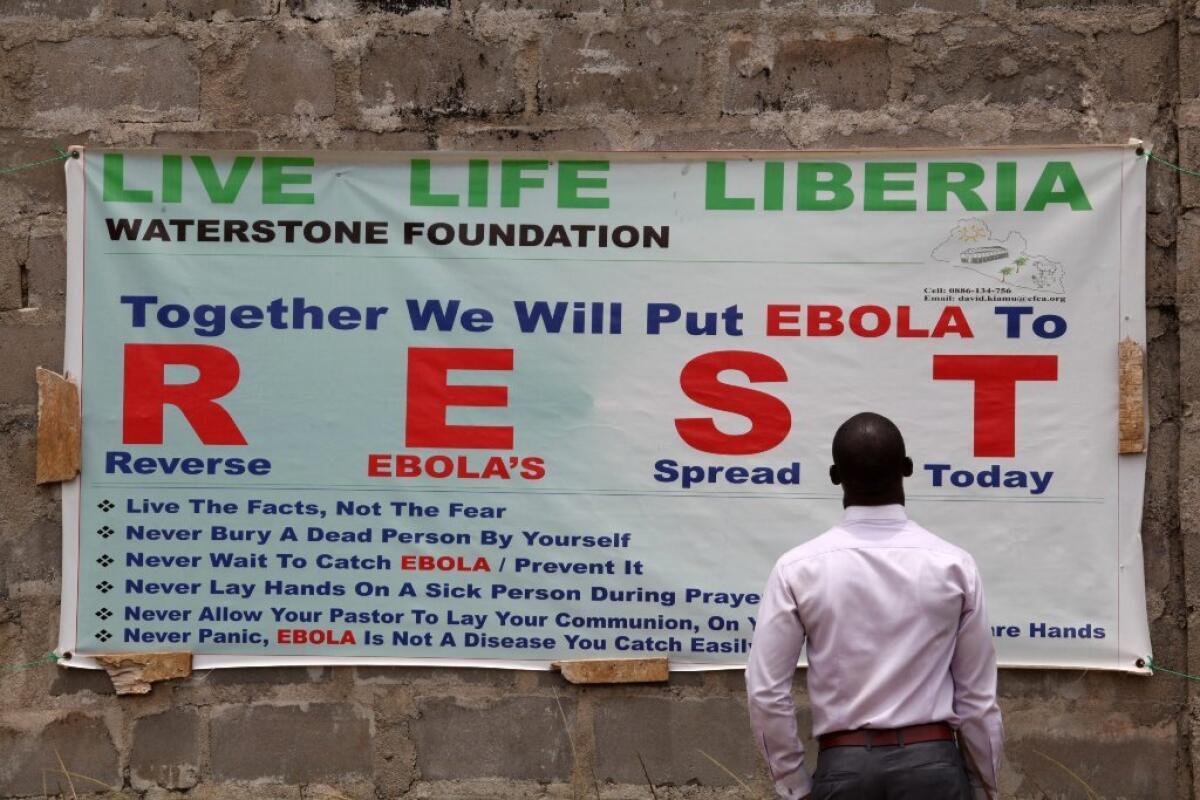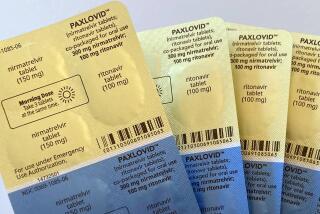Promising Ebola drug protects rhesus monkeys

The newly-refined version of a medication that showed early promise against the Ebola virus has proved highly effective in a small group of monkeys infected with the strain of Ebola responsible for the recent epidemic in Western Africa.
The experimental treatment, called TKM Ebola, is a version of a biologic medication made by the Canadian firm Tekmira that was administered to infected humans on a compassionate-use basis during the Ebola crisis. The version found effective in rhesus monkeys, however, is a cocktail of small interfering RNAs -- genetically engineered molecules that interfere with a virus’ ability to replicate -- that has been tweaked to better match the Ebola strain circulating currently.
In a study published Wednesday in the journal Nature, researchers report they infected six rhesus monkeys with high doses of the so-called Makona Ebola virus, and after three days, began administering seven once-daily injections of the TKM Ebola treatment to half of them.
While all of the monkeys were already showing clear signs of illness when the treatments began, the three that got the Tekmira treatment “got better and better every day,” said the study’s lead author, Thomas W. Geisbert. The three control monkeys succumbed to the disease eight or nine days after infection. But despite clear evidence that they had been very sick with Ebola, the three treated monkeys recovered fully, with apparent immunity to the virus.
The Tekmira drug is notable not only for its preliminary success in treating Ebola, but also for the fact that it can be optimized to fight a specific viral strain of Ebola and then be produced in as little as six to eight weeks. That’s in contrast to another of the most promising Ebola therapies -- a monoclonal antibody treatment called ZMapp -- which can take as long as six months to design and produce.
The speed with which TKM-Ebola can be readied for use is important because the Ebola virus has shown a propensity to evolve in ways that could render other drugs useless -- or at least less effective -- from one outbreak to another.
While the Makona strain of the Ebola virus is 97% similar to the strain against which the earlier Tekmira drug was built, the small differences might have made that earlier drug candidate less effective. To make the treatment tested with the latest drug perfectly “match” the Makona strain, scientists led by Geisbert adapted it in three places -- both improving it and demonstrating the flexibility of the design process.
If the structure of the Ebola virus now beginning to go to ground in West Africa shifts before springing up to infect a new population of patients, the Tekmira treatment could quickly be optimized to combat the newly emerged strain, and then be produced in large volumes.
“A year from now we could have another outbreak, and then what are you going to do?” said Geisbert. “You can make midstream corrections really quickly with this technology.”
The new TKM-Ebola cocktail is already being evaluated for efficacy in Ebola virus-infected patients in Sierra Leone, one of the three countries in which the Makona strain of Ebola has been circulating for just over a year.
In an interview, Geisbert said that with the decline of the West African Ebola virus epidemic -- which is estimated to have claimed as many as 10,460 lives -- animal studies may end up providing the most useful measures of a treatment’s effectiveness. With fewer and fewer new cases of Ebola reported in Sierra Leone, Liberia and Guinea, it’s unlikely that study populations would be large enough to afford a clear picture of a treatment’s safety and effectiveness in humans, he said.
If scientists and public health officials are to be prepared for the next outbreak of Ebola, Geisbert said they may need to rely on human trials that demonstrate the safety of a treatment at various doses, supplemented by the results of non-human primate trials to establish the effectiveness of a treatment.
While the latest study suggests the TKM-Ebola treatment is effective, Geisbert added that, when the Ebola virus next rears up, scientists and physicians will likely deploy cocktails of drugs -- including ZMapp -- against the virus, much as they used multiple approaches to improve treatment of HIV.
Follow me on Twitter @LATMelissaHealy and “like” Los Angeles Times Science & Health on Facebook.







